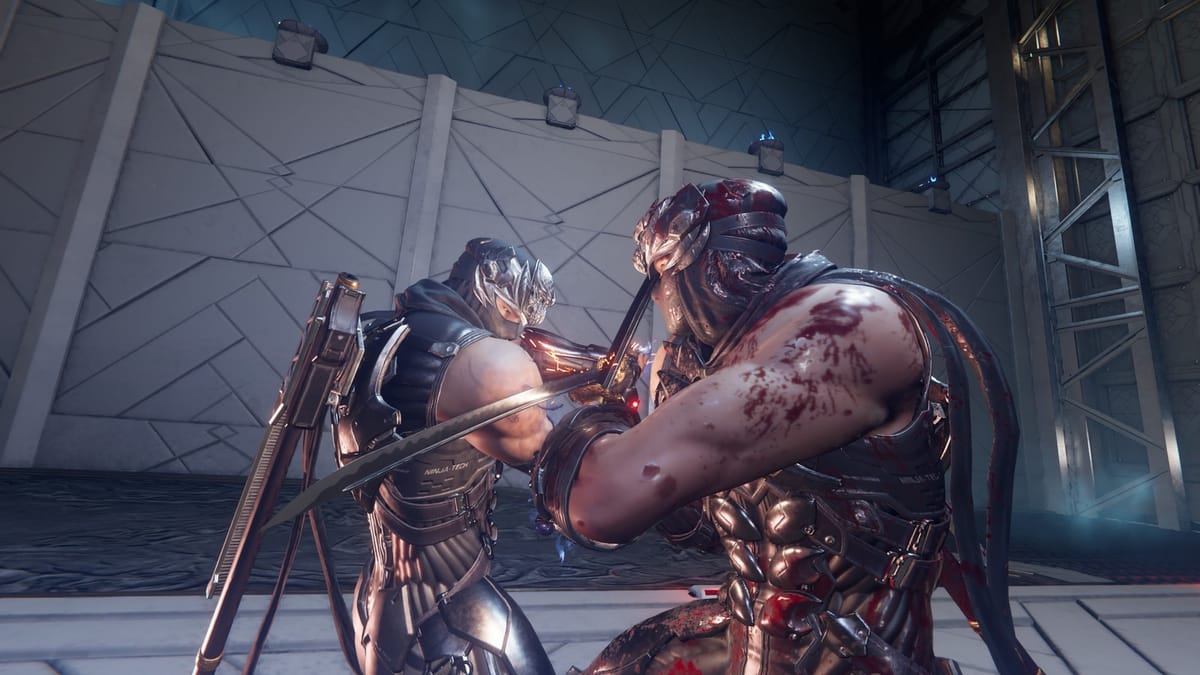
It’s been a long time since the last Ninja Gaiden game. GamingTrend has you covered no matter what your relationship is with this series. Our review is broken into two parts, one providing the perspective of a longtime fan (Jack) and the other a series newcomer (Joey). No matter which path you’re coming to Ninja Gaiden 4, we’ve got you covered.
Jack:
As an elite (and humble) Master Ninja who has been playing Ninja Gaiden games for 20+ years, I obviously have opinions. Ninja Gaiden Black and Ninja Gaiden II are the greatest 3D action games of all time. While I can tolerate Ninja Gaiden projects after NG II and even appreciate their merits, none matched what I was looking for in a Ninja Gaiden game. In this humble Master Ninja’s opinion, Ninja Gaiden never received a true successor after NG II.
Of all the attempts to succeed Ninja Gaiden’s legacy, NG 4 comes the closest. I don’t say that lightly. To be frank, when I saw that PlatinumGames was handling the development of NG4, I cringed. I don’t care for most of Platinum’s output this past decade, and the releases I do like share nothing in common with Ninja Gaiden. NG 4 surprised me by not only being the best Platinum game in a long time, but also a game that advances NG II’s ideas in all the ways a successor should. I have some critiques (I usually do), but NG 4 answers the call despite some scars on its design.
My biggest fear going into the game was that it wasn’t going to feel like Ninja Gaiden. Platinum, with some exceptions, tends to make the same kind of game: variants of Bayonetta. I like Bayonetta fine, but Ninja Gaiden is not Bayonetta. Bayonetta focuses on dodge or parry timing combined with stylish combos. Ninja Gaiden focuses on efficiency and survival. There’s a simple, practical nature to the combat of Ninja Gaiden that differentiates it from the likes of Bayonetta or Devil May Cry and defines its place in the action game landscape.
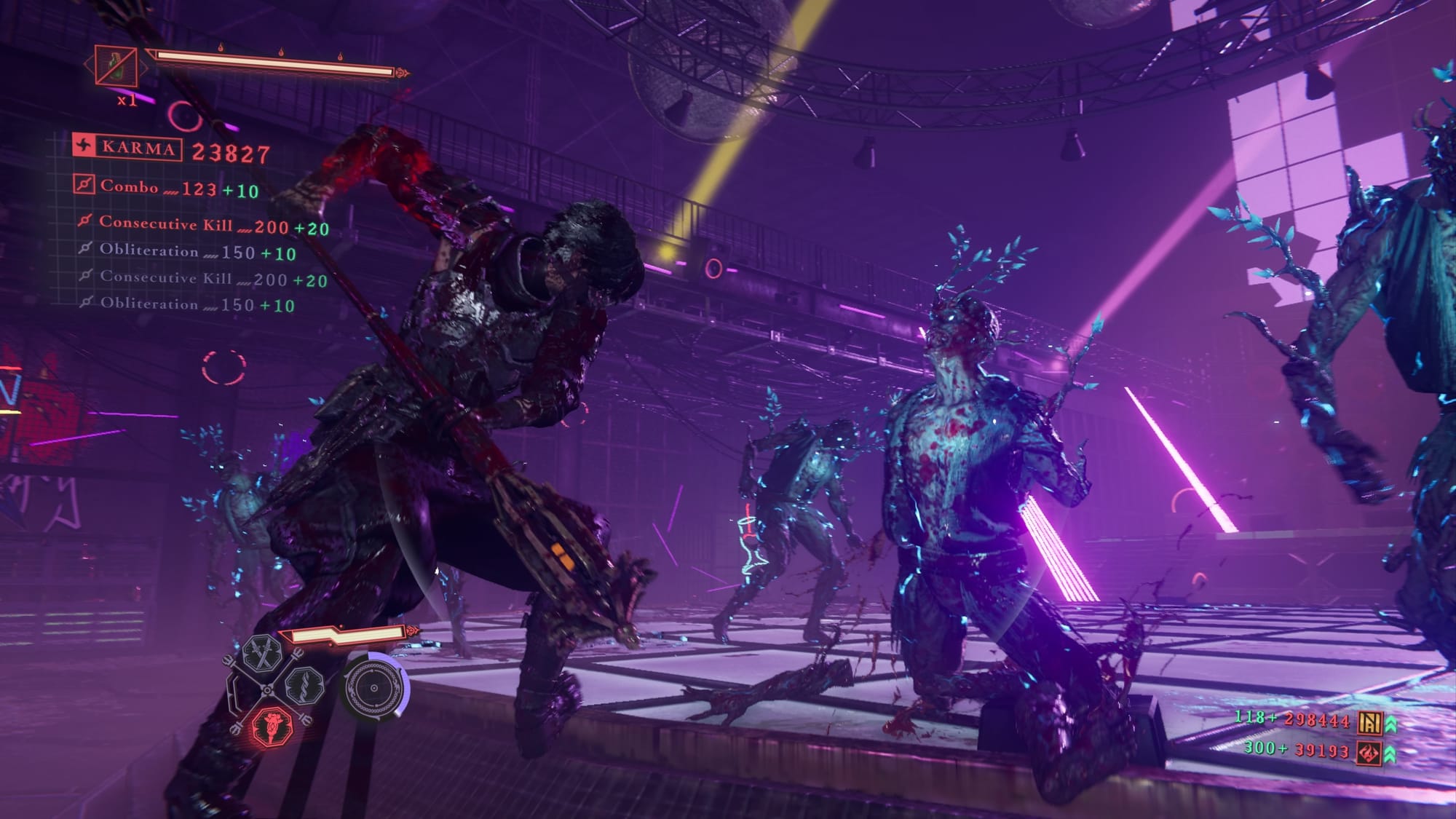
While NG4 certainly adopts some Platinum-isms, they don’t swallow the essence of Ninja Gaiden whole. NG4 plays like Ninja Gaiden – NG II to be exact. Enemies mercilessly swarm you, each one capable of taking you down on its own if you aren’t careful. Odds may appear stacked against you, but truthfully they’re not. You can dispose of enemies as easily as they can kill you – emphasized by a “delimb” system that allows you to instantly kill any opponent that loses a limb. With practice, you can exploit various combos, strategies, and special techniques to exploit windows of invincibility and opportunity that your enemies cannot. That’s the balance of Ninja Gaiden’s combat: even when the game cheats, a skilled player can cheat right back to find a path to victory.
Although NG 4 absorbs the essence of NG II’s combat, it makes some adjustments to the precarious balance at play. Many enemies have a tanky amount of health, which harkens back to the Sigma version of NG II. Check out my Ninja Gaiden 2 Black review for the full breakdown on what the heck that’s supposed to mean, but suffice to say you’ll be hoping and praying for a delimb every time you slash an enemy. With the amount of enemies on-screen and their overall aggressiveness, the amount of punishment some enemies can take often feels excessive.
The essence system, where enemies drop absorbable orbs upon defeat, has been reworked. Originally, essence introduced an element of strategy to the game: you could absorb it normally for extra health, or charge it into your sword to unleash an “Ultimate Technique” to quickly and safely defeat several foes at once. In NG 4, essence restores so little health that other reviewers I discussed the game with didn’t even realize they restored health at all until I told them. If you have to make a choice between a health refill or an Ultimate Technique, it makes far more sense to just go for the damage every time in NG 4.
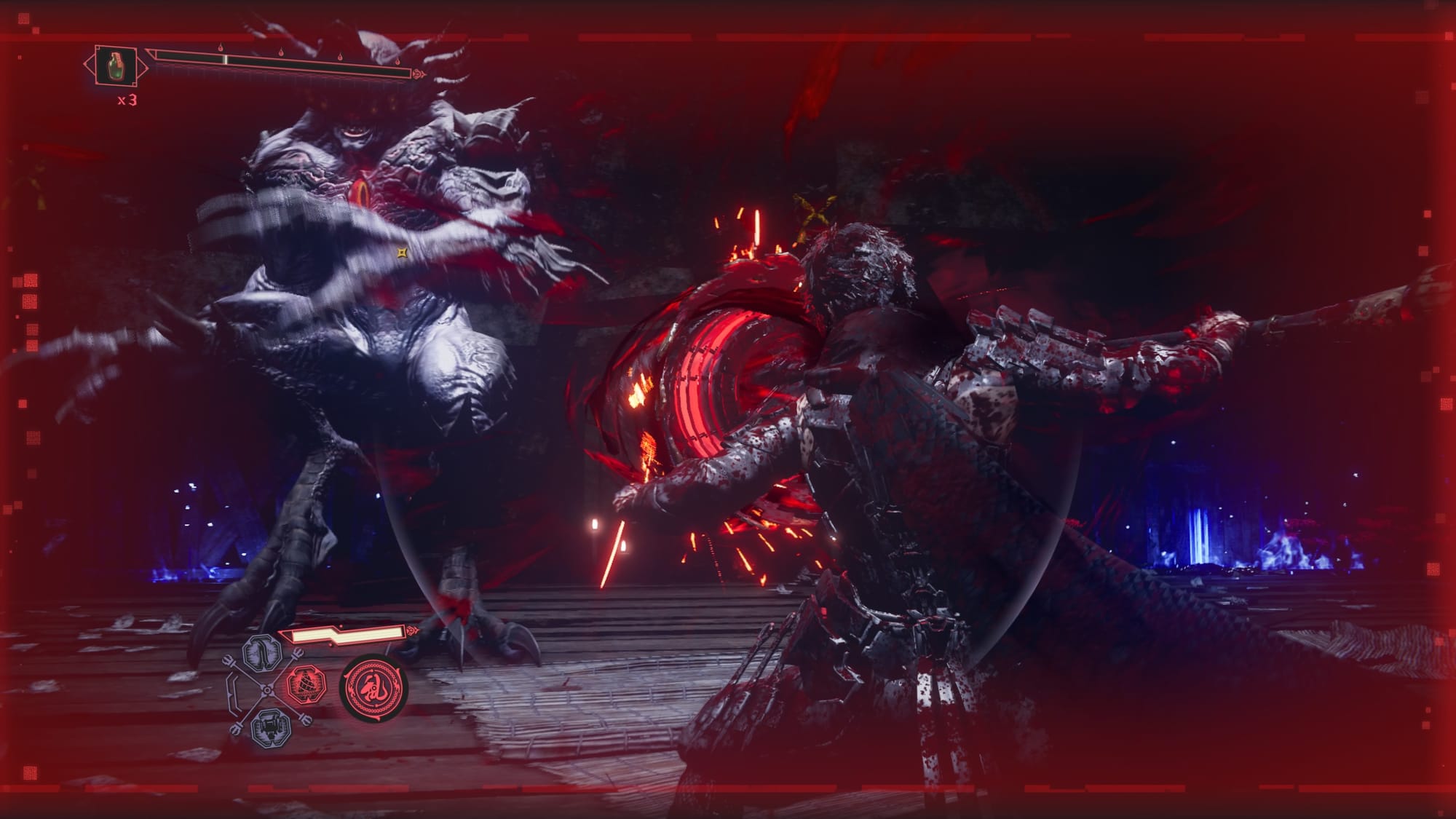
That calculation becomes especially obvious when you consider the high level of damage you take in NG 4. Even outside of the Master Ninja difficulty mode, tougher enemies and bosses can easily kill you for just a few minor mistakes. On Master Ninja, you die almost instantly. Sometimes when I die, I can’t even tell what killed me because it happened so fast. Some off-camera enemy hits can feel like jumpscares, despite a new visual indicator trying its best to clue me in on what’s going on. Why worry about health refills at all if they won’t make a difference?
Several changes feel like a direct response to veterans of the series. While Ninja Gaiden traditionally encourages cheating, many of the classic strategies now have direct counters. Where once you could have continuously propelled enemies into the air and Izuna Drop them for high damage and long invulnerability windows, enemies have adapted and can now enter into a blocking state mid-air to break your combo. The other classic go-to, abusing Ultimate Techniques by running and camping out waiting for enemies to approach can now be hard-countered by enemies switching to projectile attacks the moment they recognize what you’re doing. Sometimes enemies will even block an Ultimate Technique outright!
The new enemy behaviors add an element of dynamism to fights that previous games lacked. Ninja Gaiden combat differs from its contemporaries in that you’ve always had to respect your enemies more than in other games. NG 4 evolves that concept in a fun way. The little counters to previous tactics feel like exactly the kind of mean stuff you’d expect from a sequel to some of the most infamously challenging games around. Add on the relentless aggressiveness that most enemies have, and each encounter can be overwhelming in exactly the kind of way this series should be.
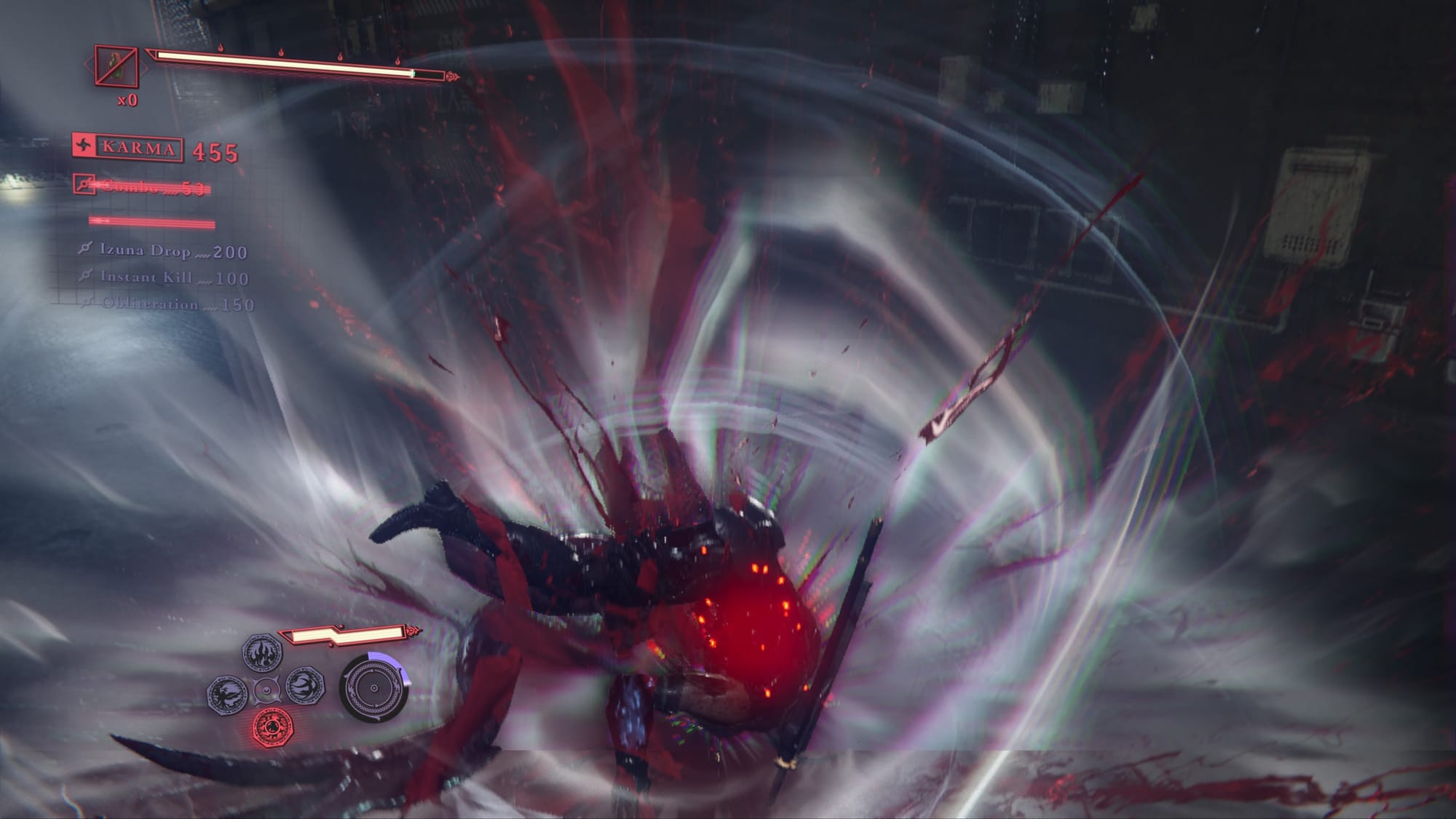
Appropriate to this series’s reputation, all these little tweaks make for a brutal challenge overall. On my first playthrough, I started the game on hard mode as one might expect of a true gamer, but after completing the first chapter I decided to turn things back down to normal to get my bearings because it was such a challenge. The otherwise enjoyable Ninja Gaiden Ragebound released earlier this year had me worried that people were making Ninja Gaiden for babies now, but NG 4 refreshingly chooses not to underestimate its playerbase. I can’t help but respect a game that respects me, so that’s another big win for NG 4.
Of course, NG 4 also gives you some new major mechanical tools to help even the odds. The perfect dodge and parry feel right out of the Platinum playbook in concept, but in execution they’re more removed from the typical Platinum design tropes than I expected. In something like Bayonetta, the counter moves are the entire game – you basically fish for them as the primary way you interact with enemies and do damage. NG 4 rewards you meagerly for most types of counters, giving you room only for a small window of damage. Without putting some resources into your counter using the other new mechanics I’ll describe below, the defensive flourishes feel more like options to buy some breathing room rather than the core focus of how the game should be played.
Being aggressive often pays off far more than waiting around for counters. The new Bloodraven system (or Gleam if you’re playing as Ryu) emphasizes you taking the initiative. By holding down a button, you can use some of a meter to power up your abilities to do extra damage, and more importantly, break the armor of your enemies. The meter prevents you from spamming these attacks, giving you incentive to be more judicious in when and where you put your back into your offense. Bloodraven attacks are easily the most interesting addition to the combat system, injecting a new layer of decision-making into the mix and serving as the perfect counterbalance to the enemy AI’s new tricks.
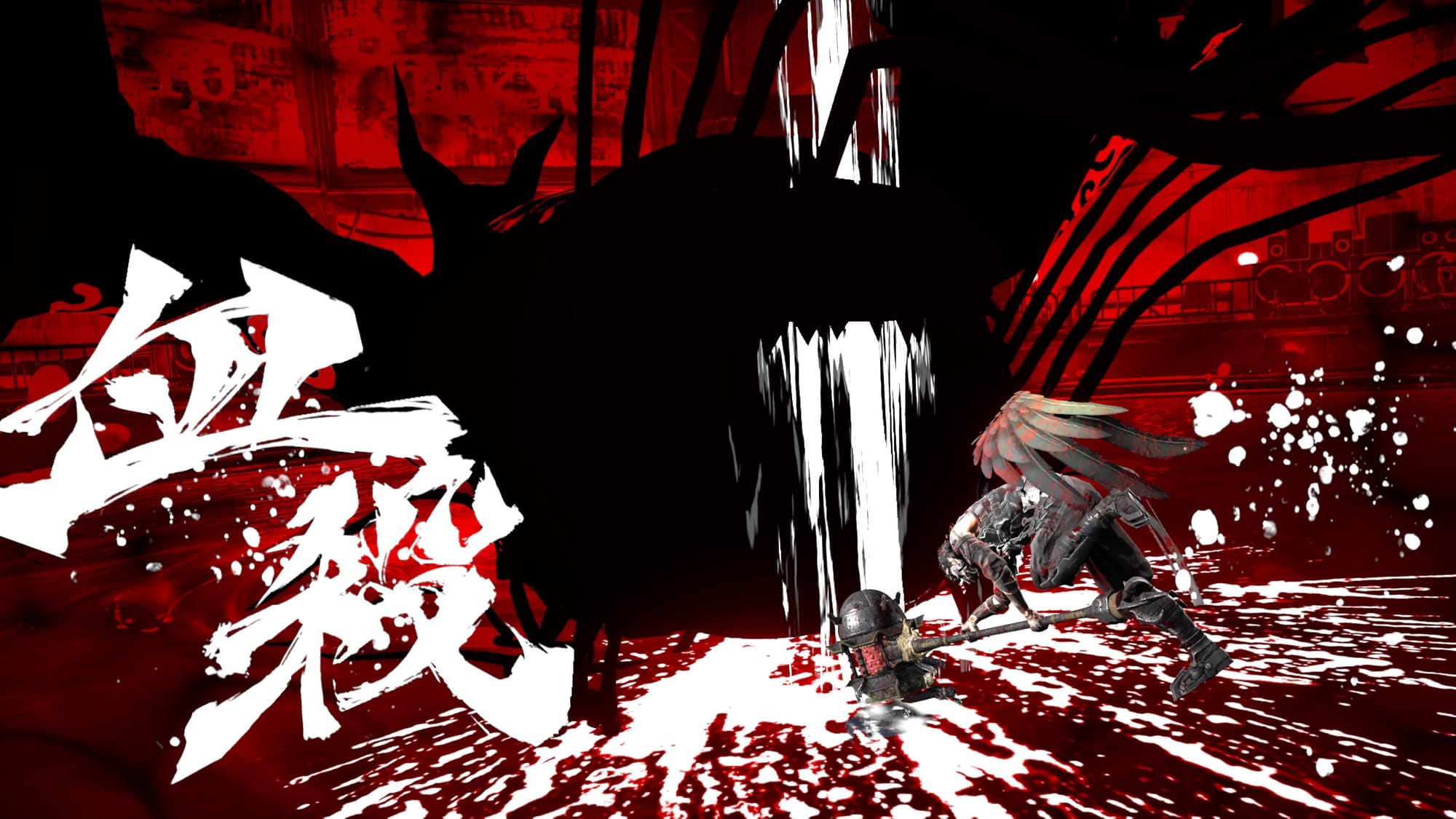
Lastly, the “Bloodbath” system takes the cheating element of Ninja Gaiden’s combat to the next level. Basically, once you fill up a specific meter while fighting, you can enter a special mode that grants you the ability to insta-kill enemies until the meter runs out. While you can cash out the meter instantly to kill enemies in close proximity to you, even this system adds a layer of skill on top by allowing you to individually execute enemies with well-timed inputs. Most instant-kill attacks have a longer start up, so you need to balance your attempts within some windows of time between enemy onslaughts.
For general combat, I like all of the new mechanical additions. Obviously for a long-dormant series like Ninja Gaiden, it can be tempting to simply replicate what worked before, but we already have a Ninja Gaiden Black. We already have a Ninja Gaiden II. Those games do not play exactly like each other, and I don’t need a sequel to replicate them either. It’s not in Ninja Gaiden’s nature to be complacent – it should be trying new things while maintaining the same basic spirit of its predecessors. NG 3 faltered because it didn’t keep the spirit I was looking for, despite its later revision doing its best to add it back in. NG 4 does the job right the first time with some new ideas that make it distinct from other action games on the market.
However, the boss encounters shift the dynamics of the combat in a way that makes some of its shortcomings easier to spot. Bosses have a ton of health and can easily sneak hits at you without the limitations of the basic enemies. These encounters force you much more onto the defensive, and as a result, more pressured to use the counter options more heavily.
I never found going for every possible counter on a boss to be worth it, though. One mistake and you end up losing half your health bar, and even if you do succeed, the damage you do barely ends up being worth the trouble. Instead, I found it more effective to sneak hits in while keeping my distance, essentially waiting to specifically activate Bloodraven counters for massive damage. This dynamic makes the bosses feel much more tedious than the general enemy encounters, at least until you memorize all their potential patterns and timings.
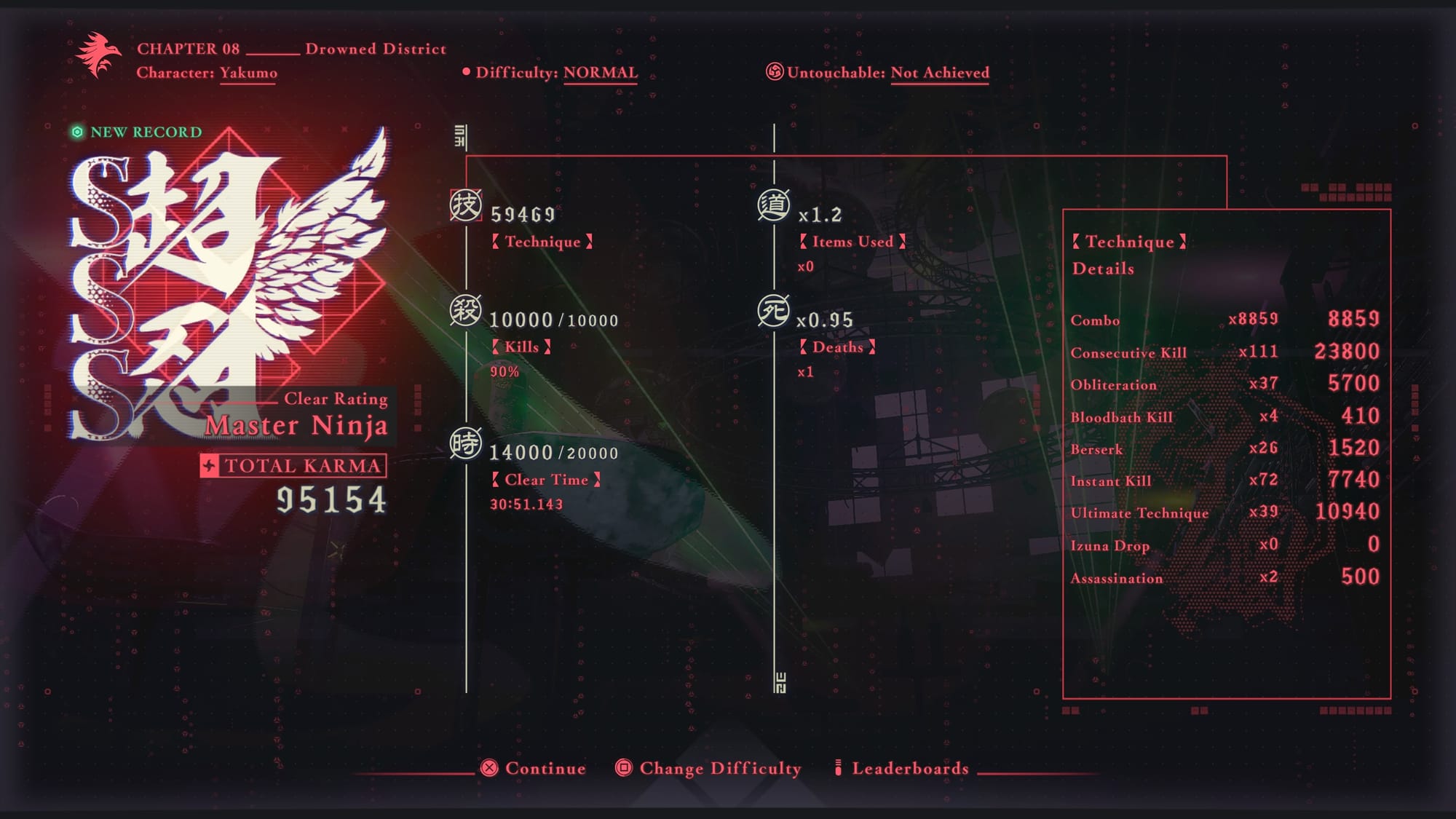
If I were to summarize my problems with the game balance as a whole, I’d say that the damage you give and receive feels off. Bosses do too much damage, and you do too little, even when you do impressive feats like parries and counter attacks. These problems could be solved in a variety of ways – you could directly tweak the damage values, for example.
The obvious end goal of NG 4’s design decisions seems to be to build the player up to doing damageless runs. The ranking system actively acknowledges this as a possibility, and on Master Ninja you’re essentially doing that just to survive. Personally, though, I don’t think Ninja Gaiden should be about perfection to such a degree. The previous games recognized imperfection and gave you ample opportunities to recover health and make comebacks. I don’t see Ninja Gaiden as a series about perfection so much as one about perseverance.
In my personal NG 4 rebalance, I’d give the player more and better opportunities to recover health. One of the theoretical benefits of pulling off a perfect counter is that it spawns essence orbs. As stated above, however, the essence dynamic barely exists in this game, and while you can recover some red health, it’s rarely a substantial amount. It’s kind of a patchwork fix, but I found the equipment items that let you recover health from Obliteration and Bloodbath Techniques to make the game a lot more enjoyable. Even simply making those actual game mechanics rather than equippable items would go a long way in making every element of the game shine.
To be clear, my suggestions are not about me finding the game too difficult. Maybe something in my brain broke at some point, but I am enjoying my Master Ninja playthrough despite how blatantly uneven it is. There’s something relaxing about just grinding out the same battle several times knowing that eventually I’ll pull through despite the odds. When suggesting changes here, I do so because I think they would make the game more fun. The current essence system lacks the decision-making appeal of the previous games without adding anything in return, and the defensive systems don’t reward you enough to be worth consistently risking. My suggestions focus on making the systems in place stronger, even if they may also make the game slightly easier as a side effect.
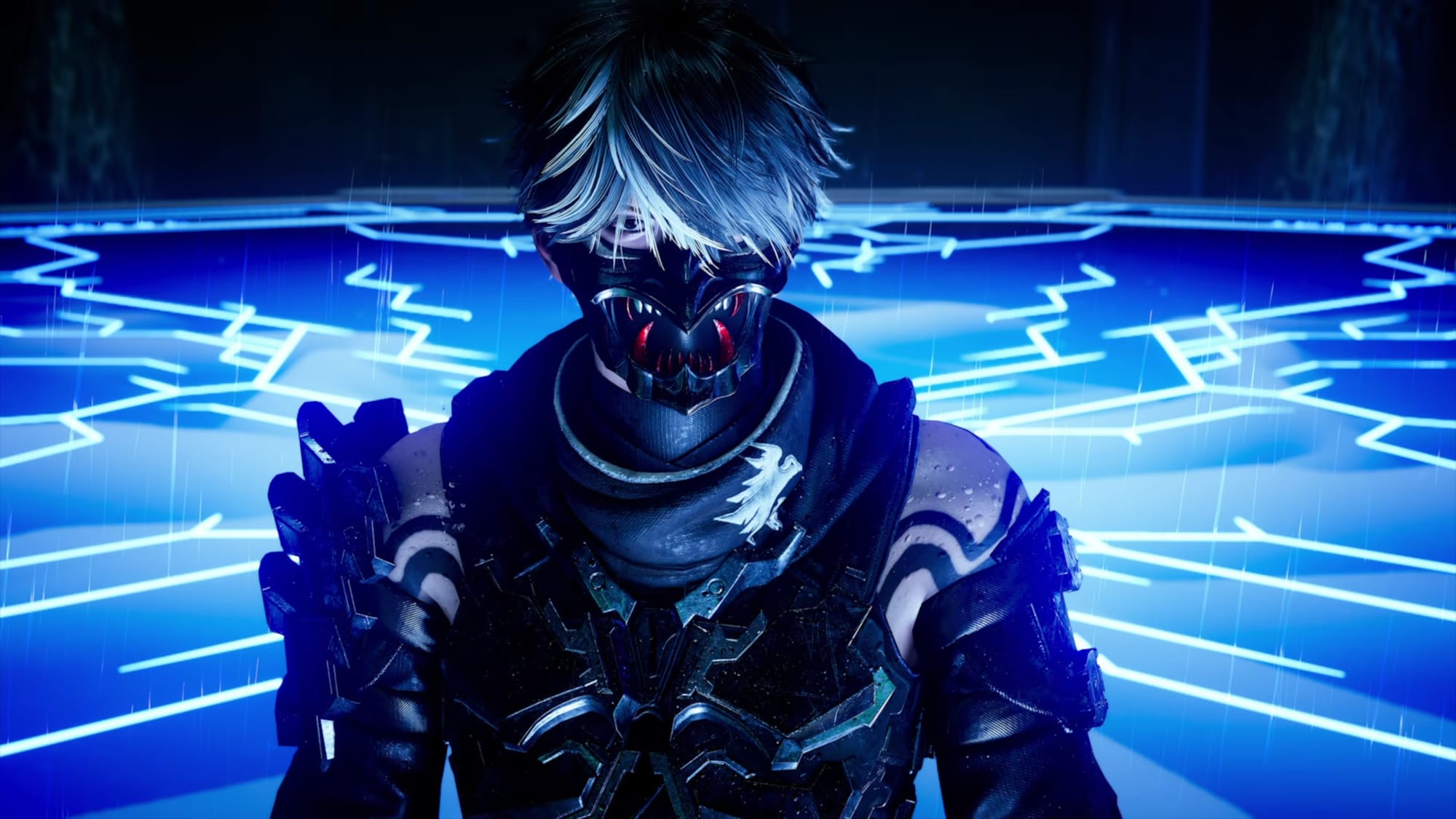
If you want an example of pure unproductive, whiny feedback, let’s talk about Yakumo. Yakumo replaces series protagonist Ryu Hayabusa for the majority of NG 4, and for the life of me I can’t understand why. For gameplay purposes, this is not the biggest deal in the world. But when thinking about NG 4 aesthetically? Culturally? Dare I say, spiritually? We have a problem. I’m not inherently against the idea of introducing a new protagonist. However, I don’t think that Ninja Gaiden is the series to do it with unless you have a particularly good reason to do it.
People like Ryu Hayabusa because he’s cool; he’s stoic and has a presence even when he doesn’t say a word. His design, his animations, and his overall portrayal sell the idea that you’re playing as the coolest person possible. In Ninja Gaiden, you play as a Master Ninja. You actively aspire to be on the same level of skill that you know the protagonist is capable of. Gameplay and premise work together to create an unbreakable image that defines what Ninja Gaiden looks like. It looks like Ryu.
Unfortunately, I don’t think anyone’s image of Ninja Gaiden will look like Yakumo. Yakumo is not cool. Frankly, I don’t know what Yakumo is. Sometimes it feels like the developers wanted him to be Ryu’s stoic equal, sometimes he gets portrayed as an inexperienced dweeb, and at other times he makes edgy one-liners that fall squarely into Devil May Cry reboot territory. Yakumo’s actions may be impressive, but neither his design nor personality can stand toe-to-toe with Ryu, despite that seemingly being the game’s intent.
If Platinum made a new protagonist because they felt self-conscious about touching Ryu and his legacy, then I feel they were misguided. Like it or not, Ryu is Ninja Gaiden. Rather than sidelining Ryu to the maximum extent possible, I’d rather have seen Platinum totally reinterpret Ryu from the ground up and do whatever crazy ideas they felt were necessary with him. If you think about it, that’s exactly what Team Ninja did when it brought Ryu from the NES to the Xbox in the first place.
If they introduced Yakumo for story reasons, particularly a concern that newcomers would be lost if the game focused on Ryu, then unfortunately they might be insane. As much as I like to nerd out about little lore things in this series, we should be real here: Ninja Gaiden barely has a story. It has a basic premise and a lot of background information at best. No one needs to play Ninja Gaidens 1-3 to “get” a brand new entry. The only prerequisite information required should be that Ryu is a cool ninja that does cool things, and you can catch players up on that premise within 5 seconds of gameplay.
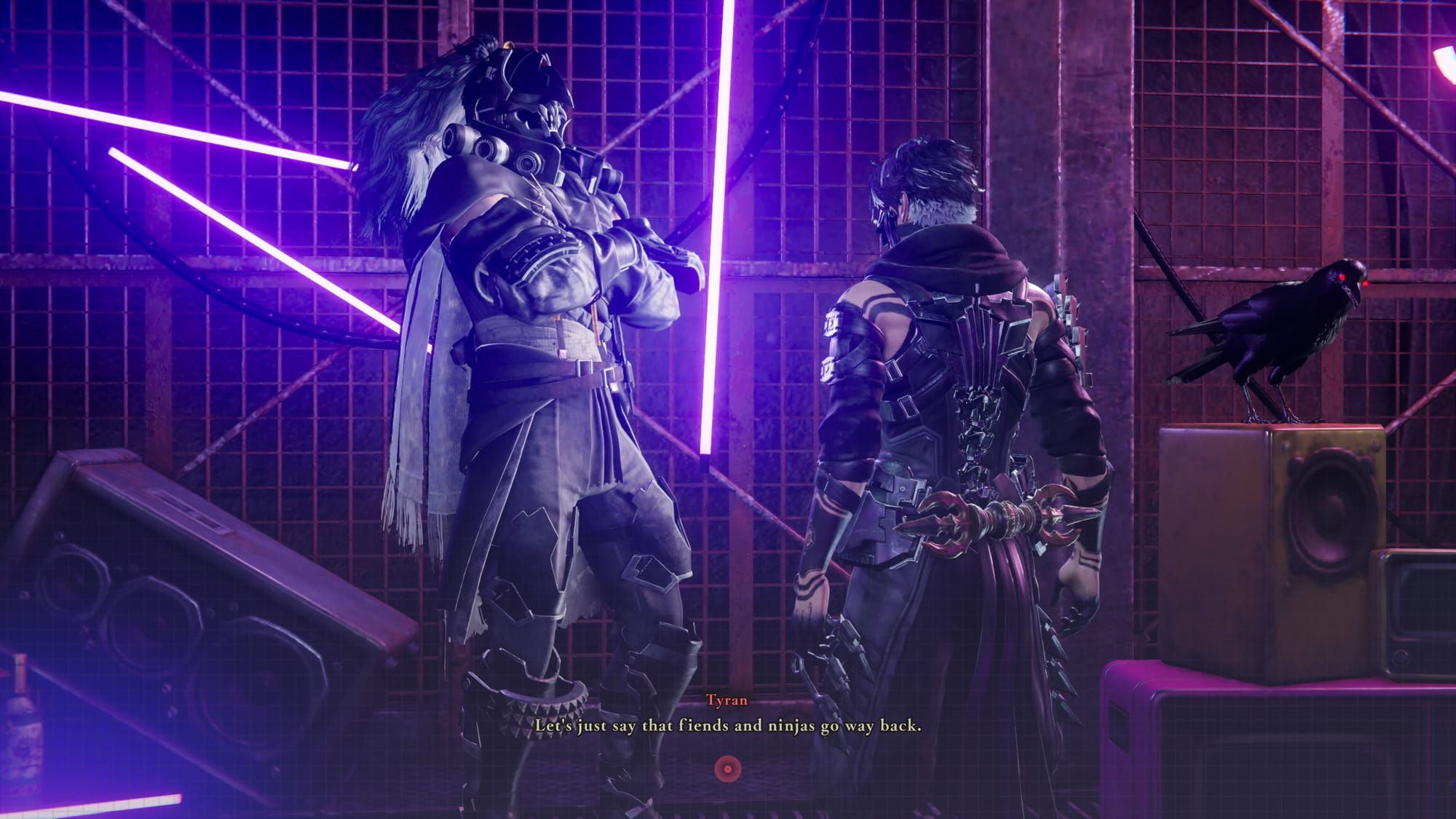
An emphasis on narrative feels especially undeserved because NG 4 continues this series tradition of barely having a story. You can sum up the game’s events within a paragraph, and Ryu’s role within it feels entirely tacked on. The game contains so little narrative content that it actually feels like half the game’s story was cut out – the little character bios in the main menu are basically required reading if you even slightly care about who anyone is or why they’re doing what they do.
All of this whining is to say that NG 4 did not satisfy me as a longtime Ryu Hayabusa fan. You do get to briefly play as him in the campaign in a DMC4-esque manner, but it’s not enough. You do unlock Ryu as a playable character for the entire game after completing it, but it’s also not enough. Ryu basically feels like a skin for Yakumo with fewer options. Yeah, the DLC promises to give Ryu some more weapons to play with, but I don’t think it’s right to charge people for something as basic as Ryu’s full toolkit either. I don’t like the publisher taking advantage of fan goodwill like that at all, even if such tactics have become standard practice in the modern video game industry.
Ninja Gaiden should be a series that respects its players whenever possible, which includes how it treats player’s connection to it. That respect is what makes its legendary entries so distinctive. While former Team Ninja Head Tomonobu Itagaki’s recent passing likely brought him to the forefront of people’s minds, in truth I was thinking about him the entire week preceding his death as I was playing NG 4. Mr. Itagaki clearly respected players and what they took from his games. By and large, NG 4 admirably follows in his footsteps with its core game design. However, it has some notable room for improvement in its balance, in its handling of its legacy, and especially in its business practices.
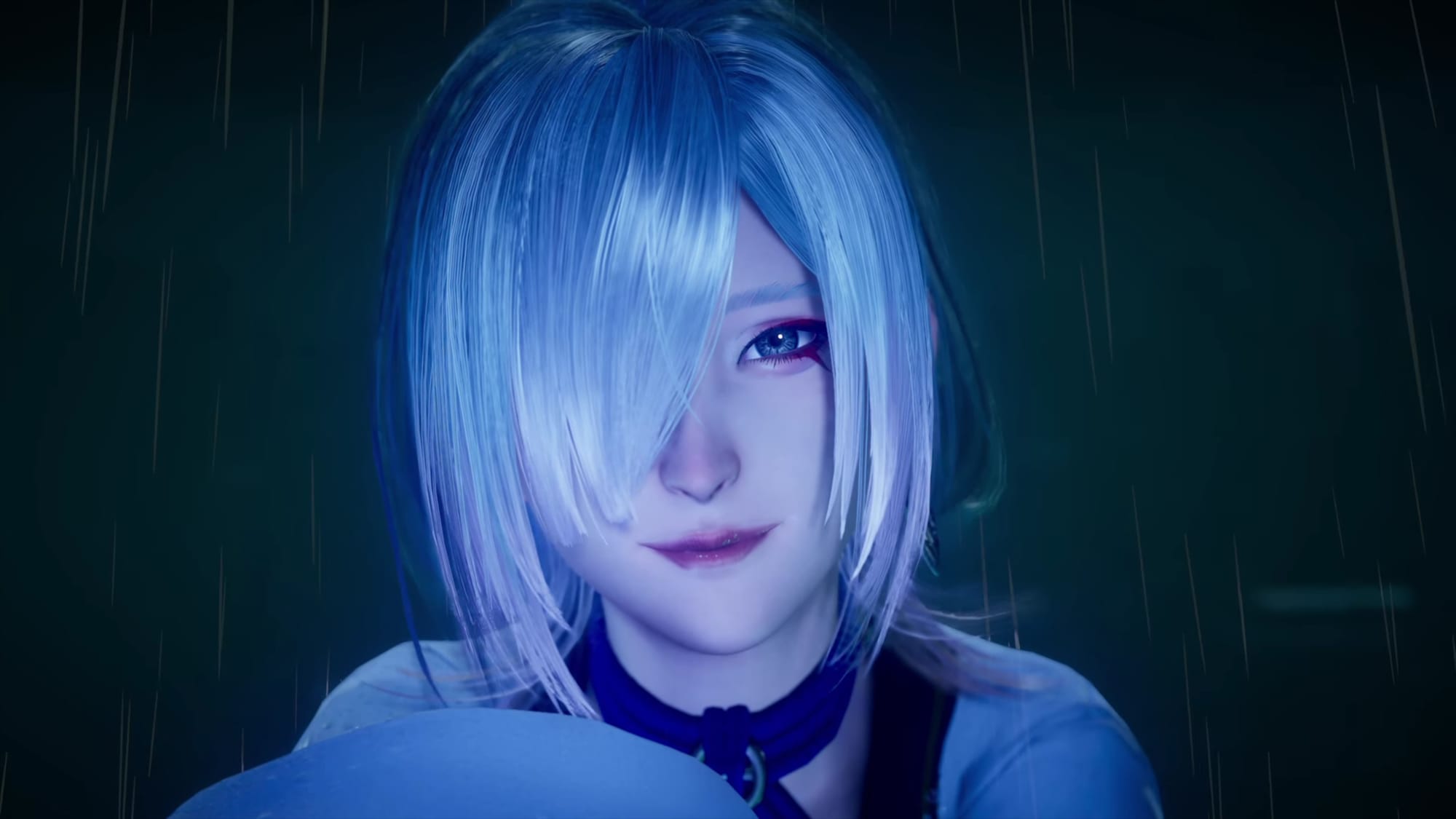
Joey:
Unlike the Ninja Gaiden savant above me, I know next to nothing about the franchise. In fact, I’ve gone so far as to shirk my journalistic duties, abstaining from researching a single thing about Ryu Hayabusa and his previous ninjular endeavours in order to provide the quintessential newcomer’s perspective. Considering there hasn’t been a new mainline entry in the series since 2012, I believe there will be a significant number of players in the same boat. After lurking in my periphery my entire life, the ninja has finally presented himself to me - and he has a really big, really bloody drill.
Ninja Gaiden 4 is an action game developed as a partnership between Team Ninja and PlatinumGames, and boy does it ever feel like a marriage between those two developers. This is a marriage with its ups and downs, its rough patches and its moments of elation, ultimately reconciling into something wholly, lovingly, matrimoniously cool. Except for its main character.
Ninja Gaiden 4’s story is basic at best, obnoxious at worst. Team Ninja has struggled as of late with narratives, especially in the Nioh franchise. I’m most familiar with Nioh 2, and though I adore that game’s combat and build variety, its story is an impenetrable mish-mash of historical figures, folklore, and general nonsense. It’s best ignored. Ninja Gaiden 4’s story is, mercifully, far more straightforward, but resembles an empty void more than something ambitiously overstuffed.
You play as Yakumo, a ninja from the Raven clan, and are tasked with killing an ancient demon called the Dark Dragon. Yakumo’s first step is to kill a currently incarcerated priestess of the Dark Dragon, requiring a shockingly easy prison break. Based on vibes (or perhaps her gratuitous and Team Ninja-patented jiggle physics?), Yakumo trusts the priestess when she tells him that she’s actually the only person capable of helping him kill the evil demon. To the game’s credit, every other character is constantly asking him why the hell he decided to trust this ostensibly malicious priestess. To the game’s discredit, it never once provides any kind of valid justification for his blind gambit.
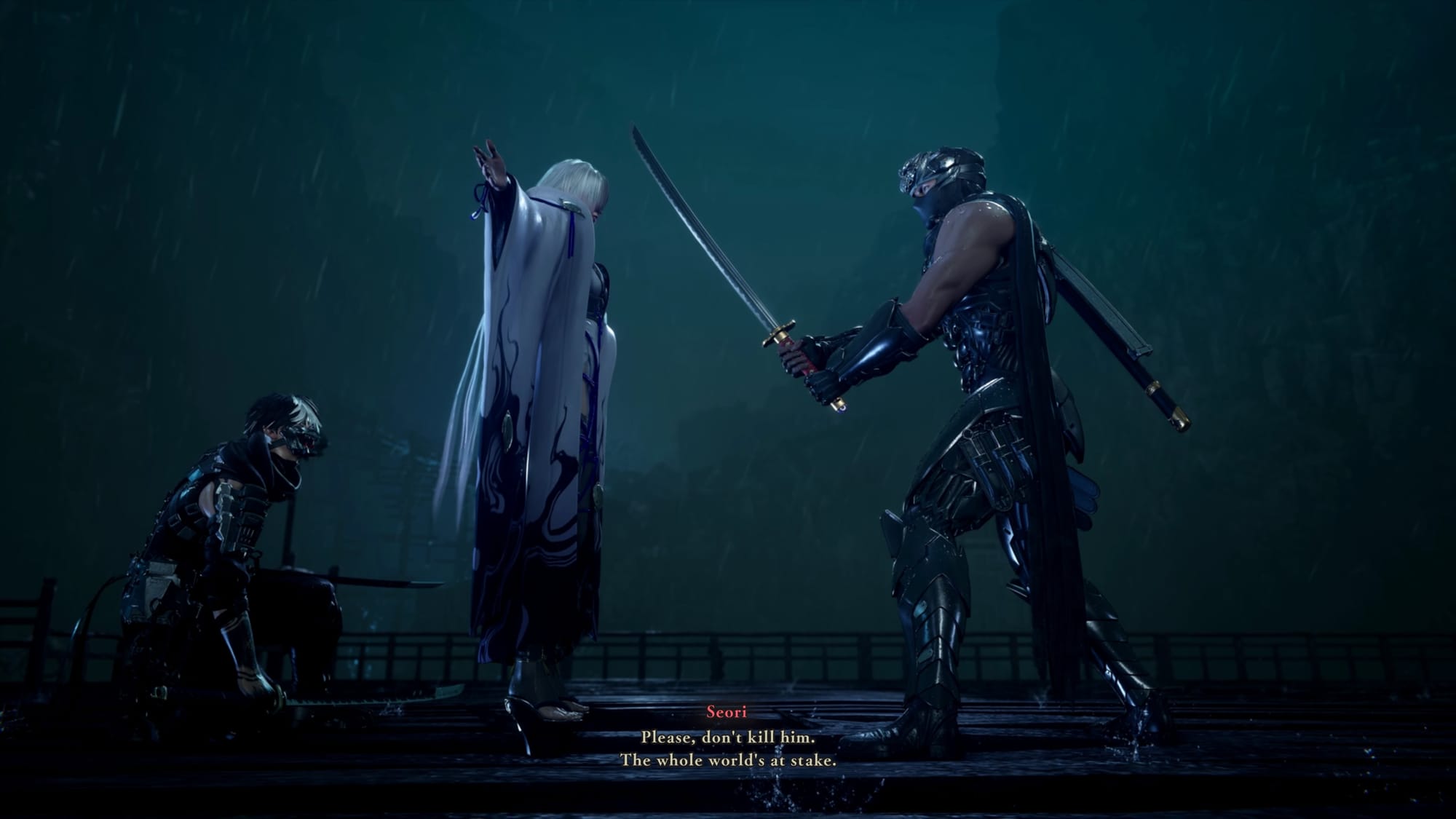
This is emblematic of the game’s general disregard for its narrative. The characters are all severely underdeveloped, none more than Yakumo himself. He presents as the super-serious, stoic, badass, no-nonsense ninja, and this manifests almost exclusively as him grumbling through his objectives, entirely uninterested. There’s an attempt at a Doomguy-esque disposition in which he is single-mindedly hellbent on the destruction of demons, words and sacred sites be damned - but it comes across more like Jack Garland’s obsession with CHAOSdoesn’t work. He’s simply boring and feels lacking in motivation, even though his goal is to save the world. The near complete lack of a tangible antagonist doesn’t help, either; there’s nothing to balance his supposed stoicism against.
But all of this apparent lack of direction crumbles away as soon as you pick up the controller. Yakumo’s personality is located not in his dialogue but in his weapons, all of which serve as brilliant forms of expression for glorious demon annihilation. During battle, you passively build your Bloodraven meter, allowing you to unleash slower, more powerful attacks in combination with your basic slashes. Once you’ve enacted gory violence upon enough enemies, you’ll be able to unleash Bloodbath attacks, which allow Yakumo to one-shot demons with Persona 5 all-out attack-style screen clears. You’re equipped with an array of defensive options, as well: you can parry with a well-timed counter-strike, smoothly dodge Bayonetta style, or block like a coward.
Each weapon comes equipped with entirely new moves and combos, creating a near-overwhelming amount of combat approaches. The main dual swords provide a relatively simple starting point to get accustomed to Yakumo’s abilities. You’ll then acquire a spear that can become a bloodsoaked drill while using Bloodraven techniques - it was love at first sight. The spear-drill is vicious; combos feel like ninja war crimes upon boring into brutalized enemies. The other two main weapons are more niche: a hammer-staff focusing on groups of enemies and a grab-bag of ninja ranged attacks, respectively. They’re fun, but never gave me the gory glee of my beloved drill.
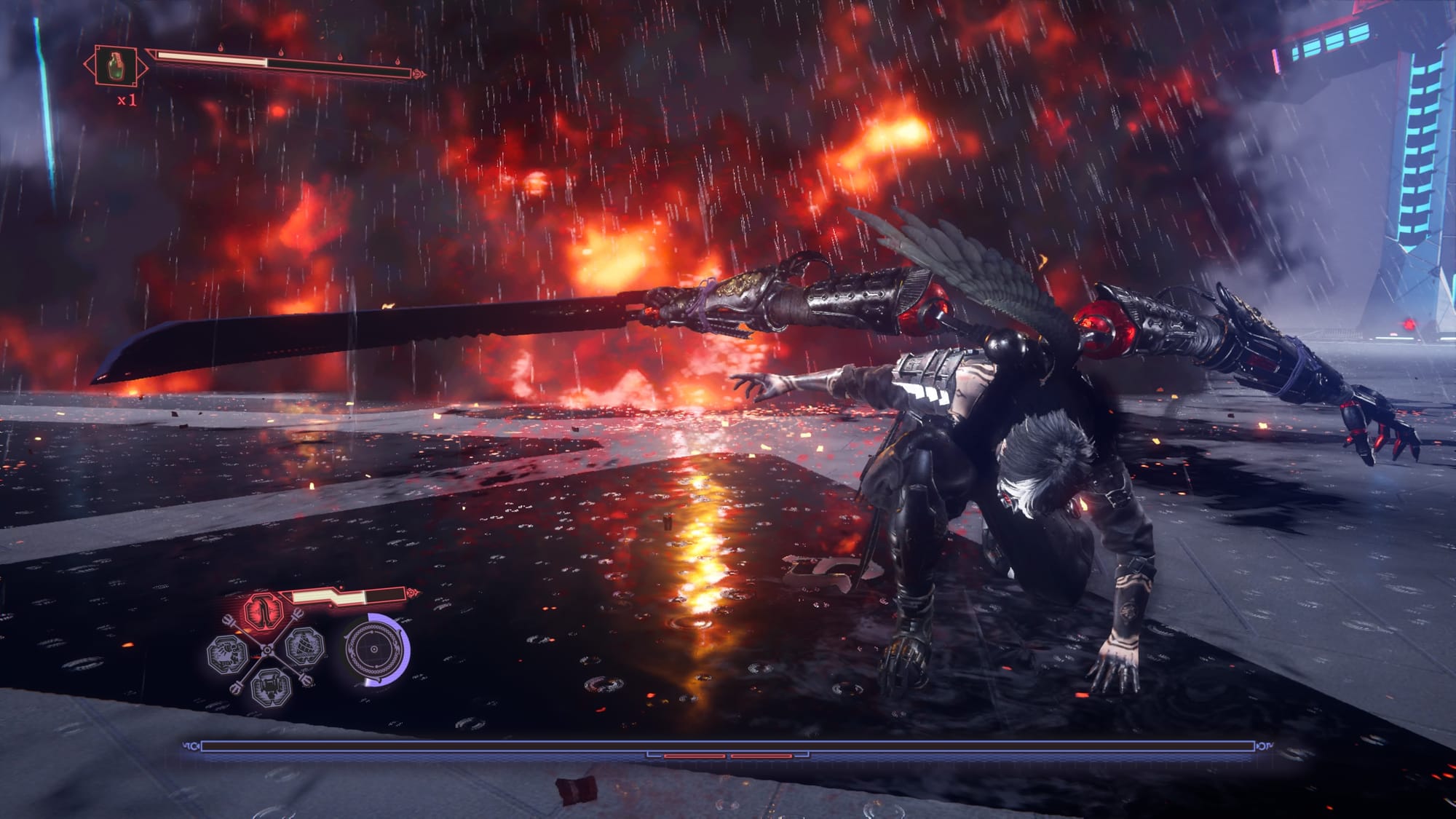
Your weapons are only as good as the things they slice and dice, and Ninja Gaiden 4 has the perfect enemy for every occasion. The game strikes the careful balance of making you feel absurdly overpowered, and then throwing an enemy type at you that forces you to quit your button-mashing and dial in. Enemies are abundant, fast, and capable of dealing insane damage in mere seconds, forcing you to thoroughly read the current encounter and decide on an approach that won’t get you clobbered by everyone at once. Though rare, this balance did slip into unfair territory on occasion; throwing so many baddies after you that it feels almost impossible to dodge or block it all. Some enemies trend towards being too tanky, too - I’m not asking for musou game squishiness, but clearing out large groups of demons frequently takes a tad too long.
Bosses are a different story. While the game largely escapes the inevitable and tiresome comparisons to the Soulslike genre with its generous checkpoints and linear structure, each boss feels decidedly Souls-y. Normal encounters are wildly fast-paced and strategically chaotic, whereas each boss forces you to slow down and play far more reactively. They have telegraphed patterns that require careful dodges and parries, multiple phases, and health bars orders of magnitude larger than any normal enemy. They feel like Nioh bosses plopped into an entirely different game and with different goals in mind. They are enjoyable for the most part, but lack the freeing power fantasy of the game’s basic encounters.
To discuss level design, we must first acknowledge the existence of Subway Surfers. Yes, that Subway Surfers – the game being played below your TikToks to hold your attention. Ninja Gaiden 4 takes inspiration from a smorgasbord of sources, many of which mesh excellently with what one can expect a 2025 Ninja Gaiden game to be like. But the game’s insistence on repeatedly having Yakumo grind spatially improbable rails, duck under railroad signs, jumping over spikes, and avoid trains - it’s bizarre. When the mechanic first appeared in one of the earliest chapters, I was content with it as a one-off pace-setting tool, breaking up what would otherwise be continuous fights. As I progressed, though, it became apparent that the rail-grinding is an awkward acquaintance staying far too long after the party is over. Many chapters are stuffed with poorly-handling on-rails (no pun intended) sequences that do serve the purpose of bridging combat encounters, but also serve the purpose of making me squint at my TV, thinking that there must have been a better idea somewhere in the development process. Mixing things up with a not-so-rad surfing ability and a finicky gliding ability did little to assuage me of my confusion. Now, if Subway Surfers were to add a combat mode with limb dismemberment…they’d have my attention. The reverse is less appealing.
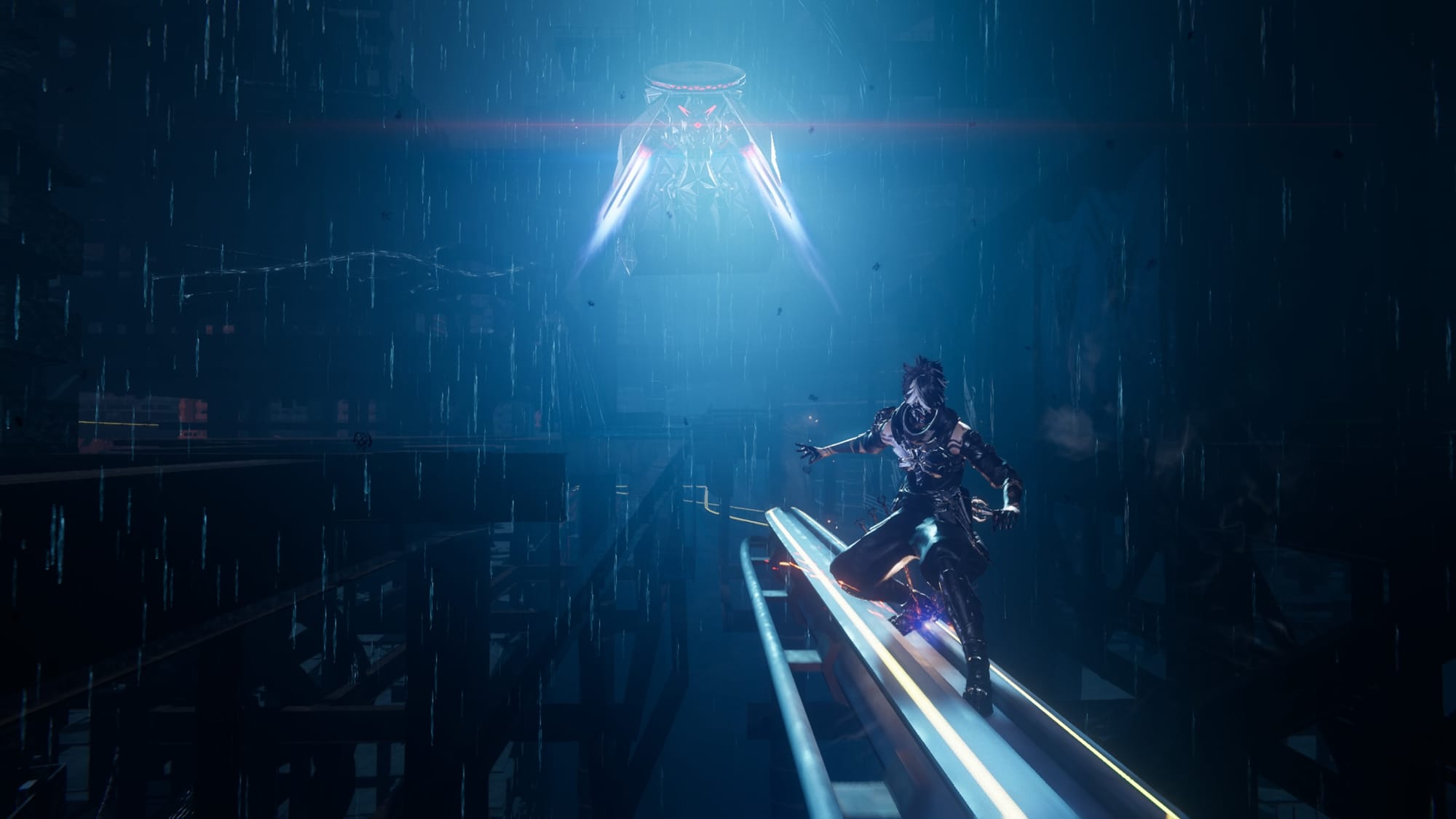
Otherwise, the construction of the levels is uniformly solid. You’re able to progress through them surprisingly quickly if you stick to the critical path, but each chapter features some minor divergences that reward you with anything from a minor health potion to a hidden bonus combat encounter. You’ll find the rare piece of gear, as well, but the equipment system is too simple and one-dimensional to even merit discussion.
What diminishes this relatively sound structure is the visual presentation of these areas. Ninja Gaiden 4 is not going to be one of this generation’s greatest visual feats, nor is it aided by particularly inspired environment design. For the most part, the game’s levels are populated with rainy Tokyo rooftops, sewers, and futuristic facilities, all with drab colour palates that highlight the lack of graphical fidelity rather than mask it. The sewer levels are somehow the most visually dynamic, featuring vibrant purple nightclub ambiance and a dimension-swapping mechanic ripped right from Ratchet & Clank: Rift Apart.
Ninja Gaiden 4 has clumsy scaffolding but succeeds where it counts the most. The combat is rewarding, stylish, and feels unlike anything else that’s been released this generation. The story, characters, visuals, and level design could all use a punch-up, but the core gameplay loop is so distractingly excellent that any qualms fall by the wayside as soon as you start fighting. The history of the franchise may remain a mystery to me, but its future looks dazzling.
Ninja Gaiden 4
Great
Ninja Gaiden 4 answers the call for a Ninja Gaiden successor. The gameplay offers plenty to enjoy for series veterans and newcomers alike, although the elements surrounding the combat don't put up as good of a fight.
Pros
- Strong combat
- Fun evolution of NG mechanics
- Enough for a returning veteran or a newcomer to enjoy
Cons
- Weak story and presentation
- Yakumo is not cool
This review is based on an early PS5 copy provided by the publisher. Ninja Gaiden 4 comes out on October 21, 2025.

